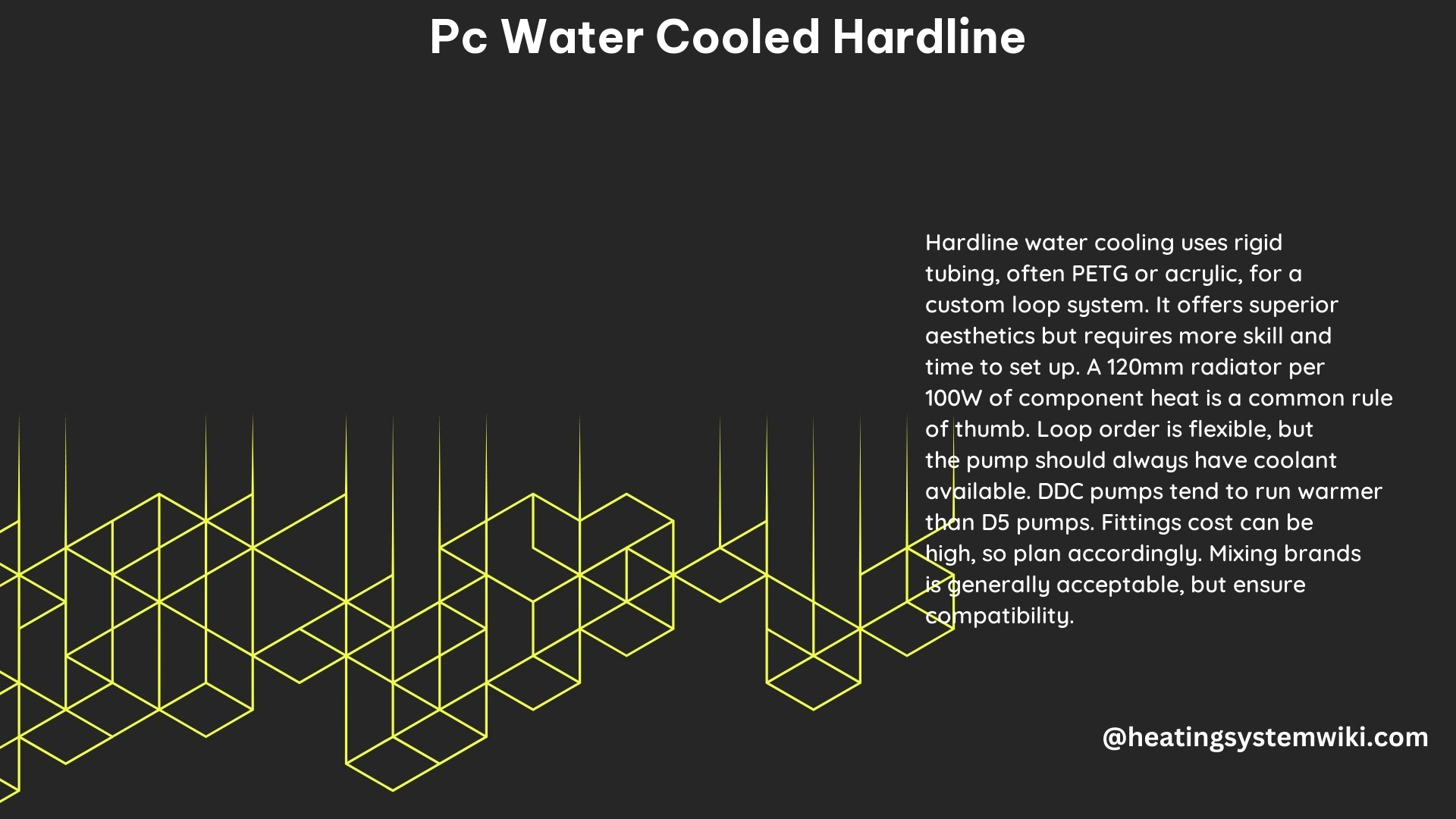PC water cooling is a popular method to keep high-performance systems at optimal temperatures. Hardline tubing is a more advanced and visually appealing option for water cooling, which involves using rigid tubes instead of flexible ones. This guide will provide a detailed understanding of PC water-cooled hardline systems, including technical specifications and a DIY approach.
Hardline Tubing Materials
Hardline tubing is typically made of acrylic or PETG (Polyethylene Terephthalate Glycol). Acrylic is more rigid and offers better clarity, with a Rockwell hardness of 92-93 on the M-scale. It has a tensile strength of 8,000-10,000 psi and a flexural modulus of 400,000-500,000 psi. PETG, on the other hand, is more flexible and resistant to cracking, with a Rockwell hardness of 70-80 on the M-scale. It has a tensile strength of 6,000-8,000 psi and a flexural modulus of 300,000-400,000 psi. Both materials have their advantages and are suitable for water cooling, with acrylic providing a more premium look and PETG offering better durability.
Tubing Sizes

Hardline tubing comes in various sizes, with the most common being 1/2 inch (12.7mm) outer diameter (OD) and 3/4 inch (19.05mm) OD. The inner diameter (ID) varies based on the wall thickness of the tubing. A typical ID for 1/2 inch OD tubing is 0.118 inches (3mm), while for 3/4 inch OD tubing, it is 0.236 inches (6mm). The choice of tubing size depends on the specific components and the desired flow rate, with larger tubing generally providing lower resistance and higher flow rates.
Bending Hardline Tubing
Bending hardline tubing requires specific tools, such as tube benders and a heat source. The bending process involves heating the tubing to make it more pliable, typically using a heat gun or a specialized tube bending tool. The recommended temperature range for bending acrylic tubing is 200-250°F (93-121°C), while PETG tubing can be bent at 180-220°F (82-104°C). It is crucial to maintain the correct bend radius, typically around 3-4 times the tubing diameter, to prevent damaging the tubing or reducing its flow rate.
Loop Design and Components
A typical water-cooled hardline system includes a radiator, water block, pump, reservoir, and fittings. The loop design can vary, but a common approach is to have the radiator after the GPU and CPU components, allowing them to cool the water in between before going to the next part. The loop order does not significantly impact performance as long as the pump always has coolant available. It is essential to consider the compatibility of the components and ensure that the fittings and tubing sizes match.
Radiator Size and Fan Configuration
The radiator size and fan configuration are critical for adequate cooling. A good rule of thumb is to have at least 120mm of equivalent radiator space for every 100W of component heat. This can be adjusted based on the specific components and cooling needs. For example, a high-end CPU and GPU setup may require a 360mm or 480mm radiator to maintain optimal temperatures. The fan configuration, such as push, pull, or push-pull, can also impact the cooling performance.
Minimum Flow Rate
Calculating the minimum flow rate required to keep components cool and prevent pump overheating involves considering the resistance in the radiator and components. A single DDC or D5 pump is typically sufficient for most builds, with a flow rate of around 1 gallon per minute (GPM) or 3.8 liters per minute (LPM). The flow rate should be high enough to maintain an average temperature, with the inlet/outlet port on most CPU/GPU blocks carefully considered to ensure efficient heat transfer.
Mixing Brands
It is possible to mix brands for different components, such as using a Corsair water block, Alphacool pump/res, and an EKWB GPU block. However, it is essential to ensure compatibility and proper fittings to create a leak-free system. Compatibility can be checked by reviewing the manufacturer’s specifications and consulting with the community or experts.
By following the technical details and guidelines provided in this comprehensive guide, you can build a high-performance, visually stunning PC water-cooled hardline system that meets your specific cooling needs.
References:
– Corsair Custom Liquid Cooling Tubing
– How to Watercool a PC with Hardline Tubing
– Corsair Hydro X Series Custom Cooling
– Reddit: How to Watercool a PC with Hardline Tubing
– Titanrig: Rigid Tubing for Custom PC Cooling
